A large part of a textile conservator’s job is preparing and mounting objects for display. Sometimes this can be a relatively straightforward job, but at other times it can be more complicated.
This was the case for the mounting of the poppy hijab for the National War Museum’s current exhibition, The Poppy: A Symbol of Remembrance.
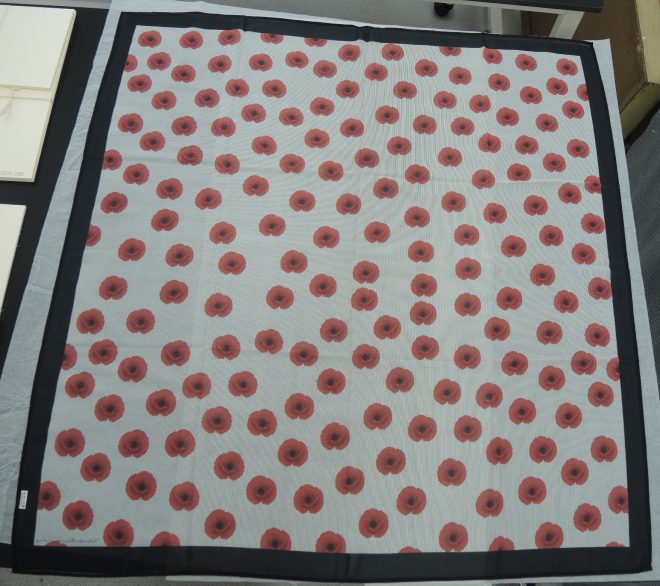
To research the display of the hijab, our exhibition curators spoke to family and friends from the Muslim community to gauge the opinion of a hijab wearer regarding the most appropriate way to display one.
The main point that came out of the discussions was that the museum should not make any statement about skin colour or facial features through the mount, as hijab wearers are from many different ethnic backgrounds.
One option would have been to have a clear acrylic head shape made. However, apart from the large cost of purchasing a conservation grade acrylic head, there would still be facial features to consider, as well as how the hijab would be secured to a slippery acrylic surface.
Another option would have been to take a standard head mount and cover it in a fabric that was far removed from any skin colour, such as grey. But we felt that a flat expanse of colour would draw attention to itself; that people would notice we were trying to steer clear of obvious skin colours and this would be the first thing people noticed rather than the beautiful hijab.
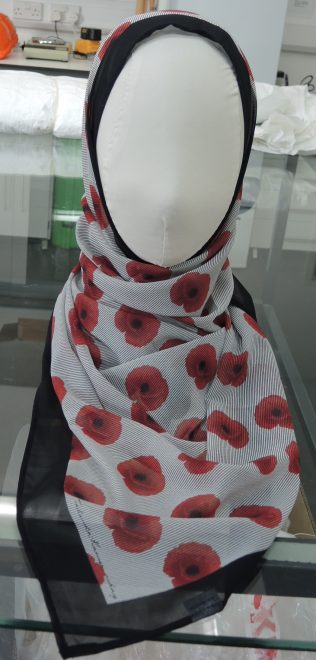
I decided to design and make a mount for the hijab myself. There is a material that has become increasingly popular in textile conservation within the last few years called Fosshape™. It has been used extensively by Glasgow Museums and the V&A in London for costume mounting for exhibitions. Fosshape™ is a thermoplastic fabric material that looks and feels a lot like felt when it is in its deactivated state. It is a non-woven, low melt, synthetic polyester fibre and it will mould to any shape when exposed to heat and pressure.
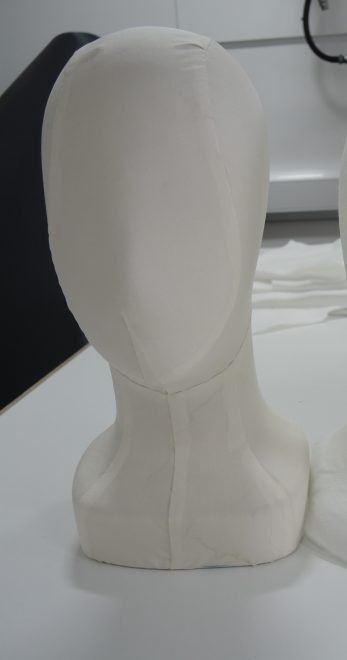
You need to have something to mould the Fosshape™ over, so I took a fabric-covered head mount that we had in storage and covered it with cling film. The cling film acts as a protective barrier between the Fosshape™ and the mount, which is useful if you do not want to damage the mount underneath or fuse the Fosshape™ to it.
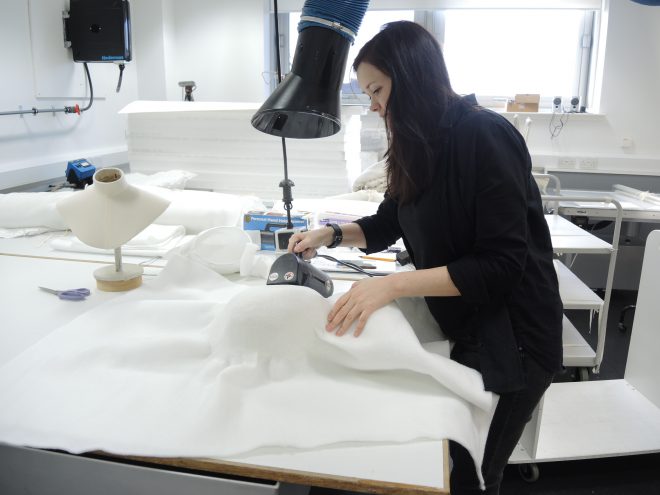
To activate the Fosshape™, I used the heat and steam from a hand-held steamer. I took a large piece of the Fosshape™ and started shaping it around the head mount. Since this project, I have attended a Fosshape in costume mounting workshop held at the V&A London, and I have learned that there are other methods and ways in which to apply the material around the mould. Had I been on the workshop before completing the mount for the hijab, I may have approached it in a different way, however the outcome would have been the same.
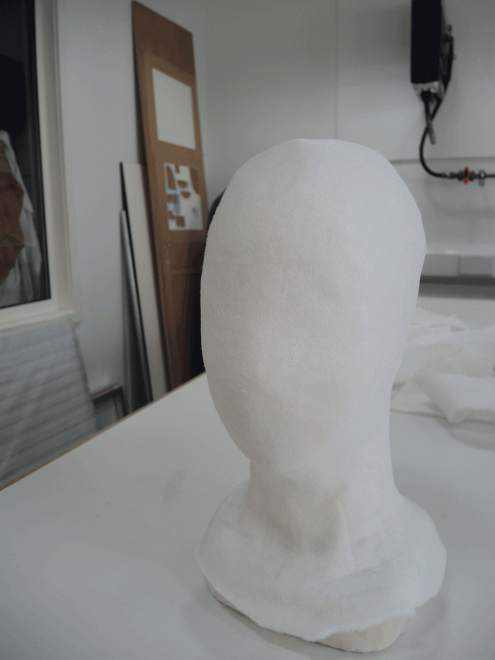
Once the Fosshape™ was moulded neatly around the head mount and dry, it needed to be taken off. I made an incision using a scalpel knife from the middle of the “face” down the centre of the chin and neck. This allowed me to carefully free the Fosshape™ from the mount, which popped back into shape once off.
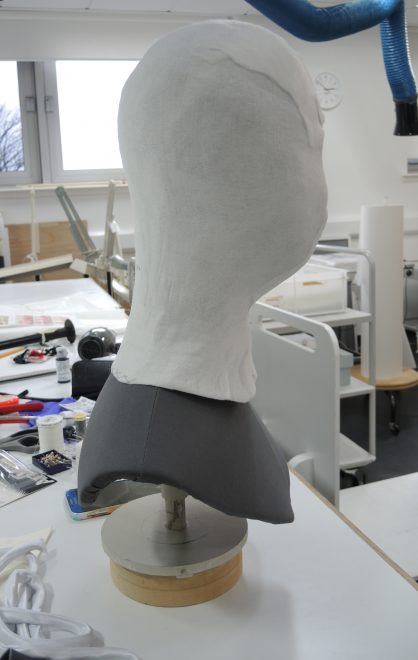
Prior to the removal, I had temporarily secured the Fosshape™ head to the shoulder and neck mount. This allowed me to try on the hijab and mark out how much of the face I needed to cut away.
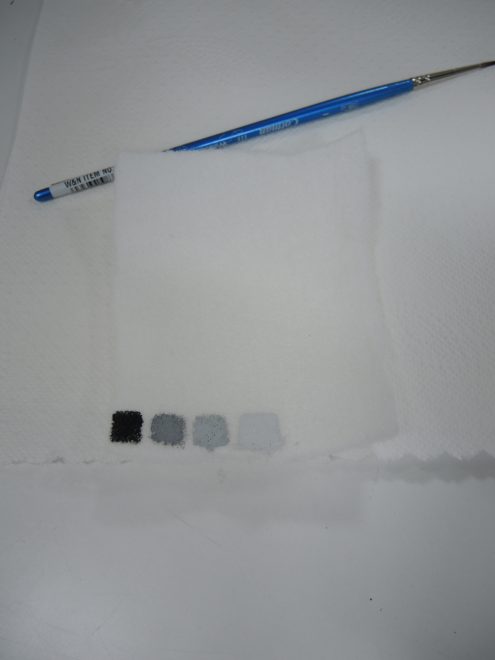
Once I had the correct shape cut out of the head, I was able to colour the inside of it using acrylic paint.

With this method of mounting, it is hoped that visitors will focus on the object and its story, rather than the mount.
The Poppy: A Symbol of Remembrance is running at the National War Museum at Edinburgh Castle until 27 January 2019. Admission is free with entrance to the Castle.
